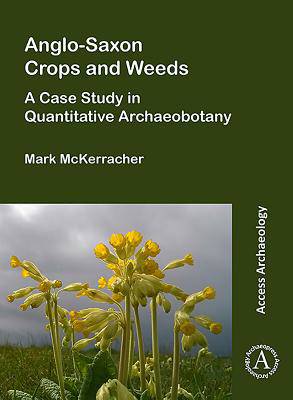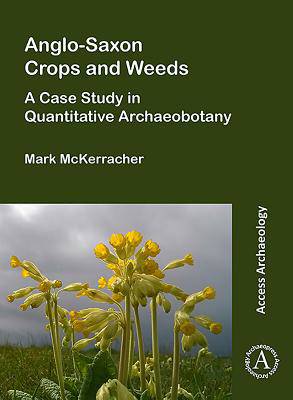
- Afhalen na 1 uur in een winkel met voorraad
- Gratis thuislevering in België vanaf € 30
- Ruim aanbod met 7 miljoen producten
- Afhalen na 1 uur in een winkel met voorraad
- Gratis thuislevering in België vanaf € 30
- Ruim aanbod met 7 miljoen producten
Zoeken
Anglo-Saxon Crops and Weeds
A Case Study in Quantitative Archaeobotany
Mark McKerracher
Paperback | Engels
€ 47,45
+ 94 punten
Omschrijving
There is a growing recognition within Anglo-Saxon archaeology that farming practices underwent momentous transformations in the Mid Saxon period, between the seventh and ninth centuries AD: transformations which underpinned the growth of the Anglo-Saxon kingdoms and, arguably, set the trajectory for English agricultural development for centuries to come. Meanwhile, in the field of archaeobotany, a growing set of quantitative methods has been developed to facilitate the systematic investigation of agricultural change through the study of charred plant remains. This study applies a standardised set of repeatable quantitative analyses to the charred remains of Anglo-Saxon crops and weeds, to shed light on crucial developments in crop husbandry between the seventh and ninth centuries. The analyses demonstrate the significance of the Anglo-Saxon archaeobotanical record in elucidating how greater crop surpluses were attained through ecologically-sensitive diversification and specialisation strategies in this period. At the same time, assumptions, variables and key parameters are presented fully and explicitly to facilitate repetition of the work, thus also enabling the book to be used as a source of comparative data and a methodological handbook for similar research in other periods and places. It constitutes a specialist, data-driven companion volume to the author's more general narrative account published as 'Farming Transformed in Anglo-Saxon England' (Windgather, 2018).
Specificaties
Betrokkenen
- Auteur(s):
- Uitgeverij:
Inhoud
- Aantal bladzijden:
- 218
- Taal:
- Engels
Eigenschappen
- Productcode (EAN):
- 9781789691924
- Verschijningsdatum:
- 30/04/2019
- Uitvoering:
- Paperback
- Formaat:
- Trade paperback (VS)
- Afmetingen:
- 203 mm x 274 mm
- Gewicht:
- 703 g

Alleen bij Standaard Boekhandel
+ 94 punten op je klantenkaart van Standaard Boekhandel
Beoordelingen
We publiceren alleen reviews die voldoen aan de voorwaarden voor reviews. Bekijk onze voorwaarden voor reviews.











